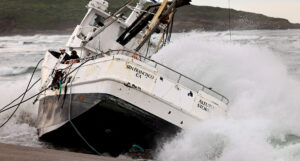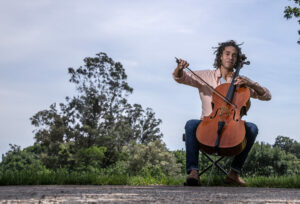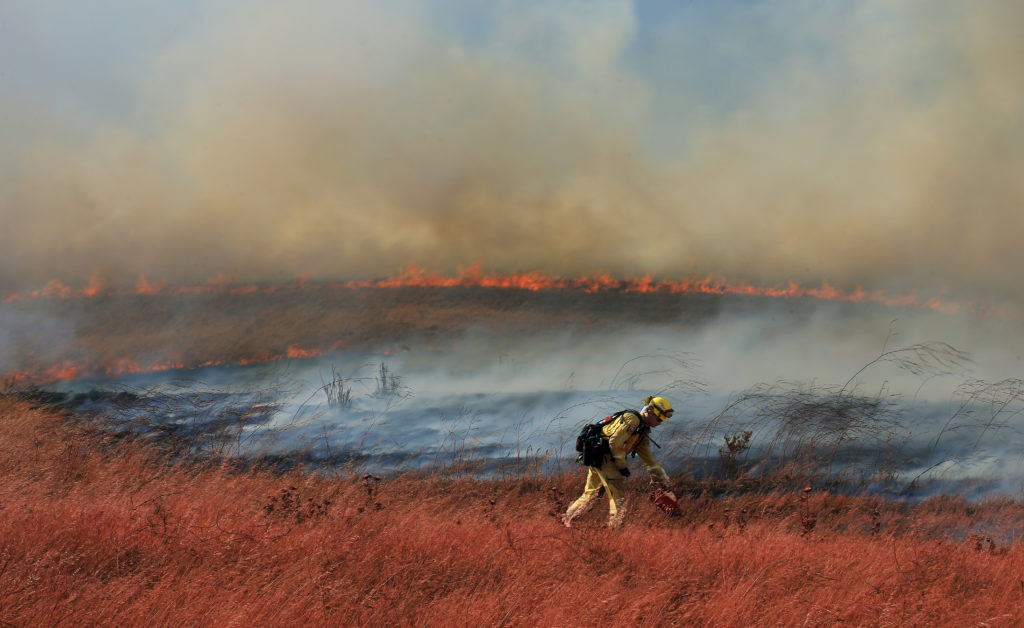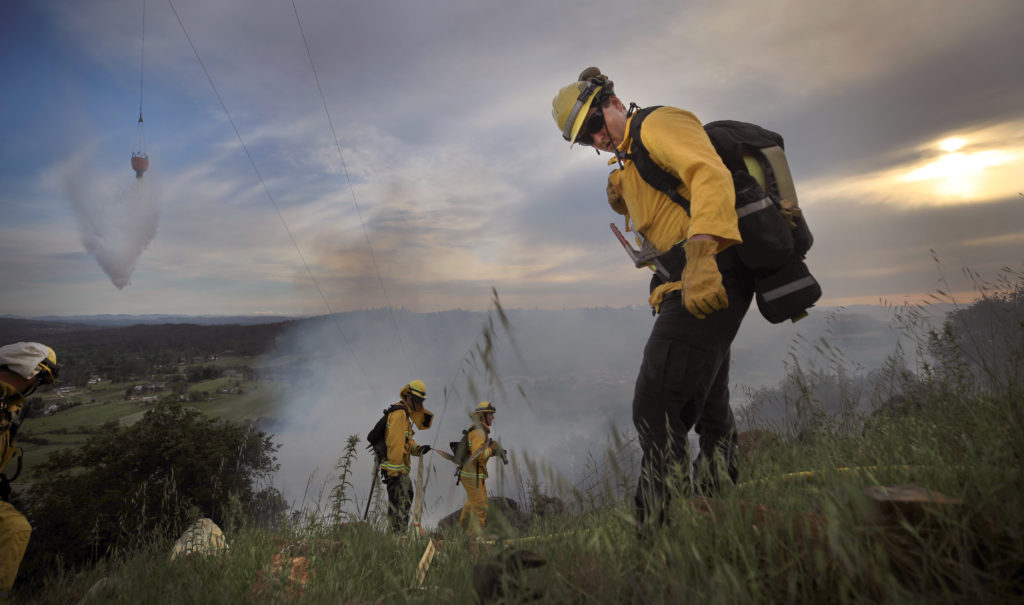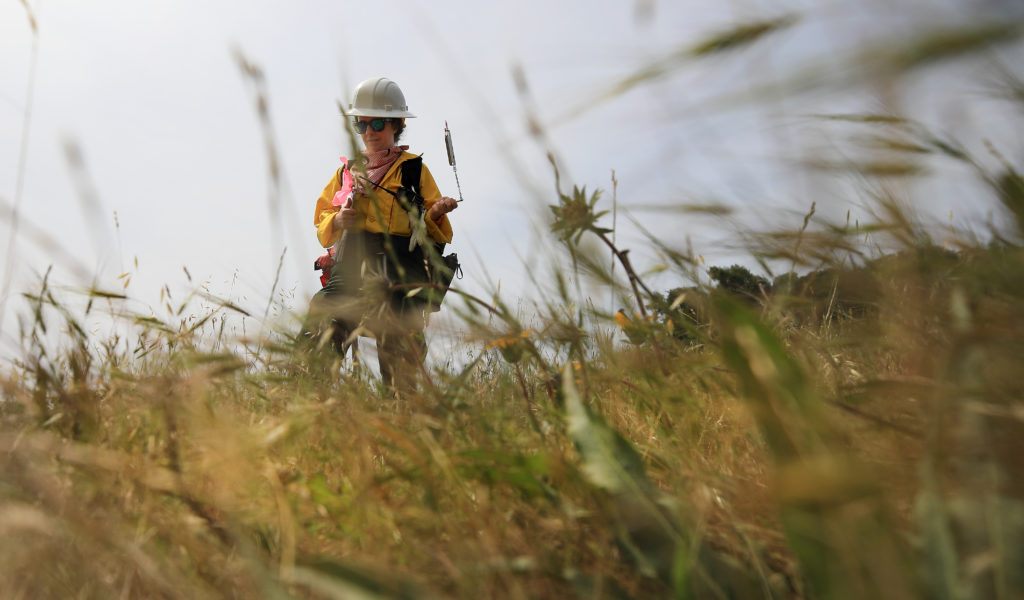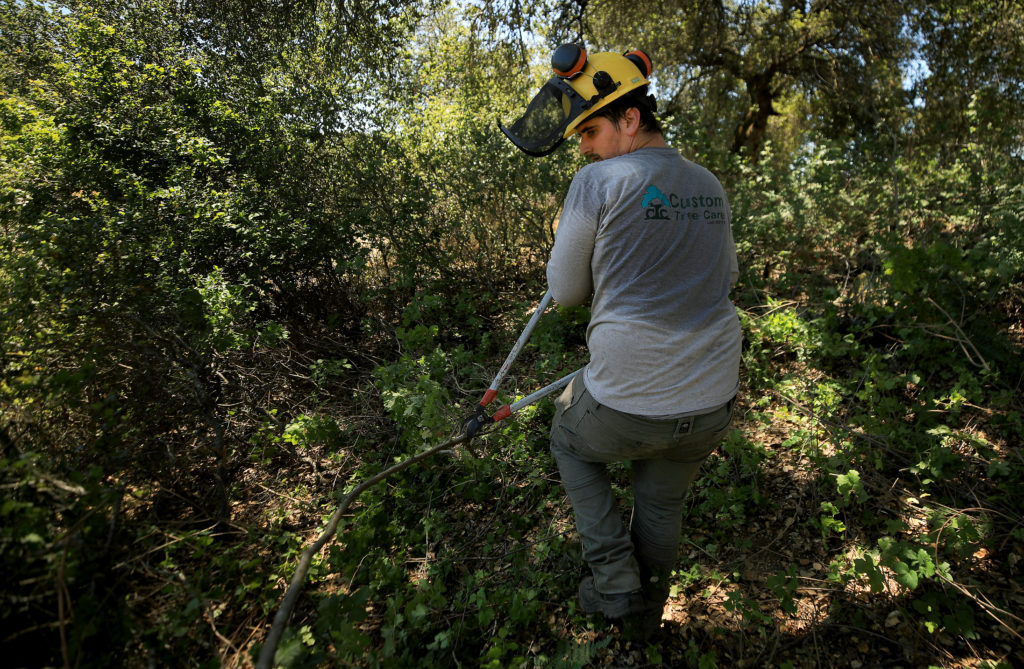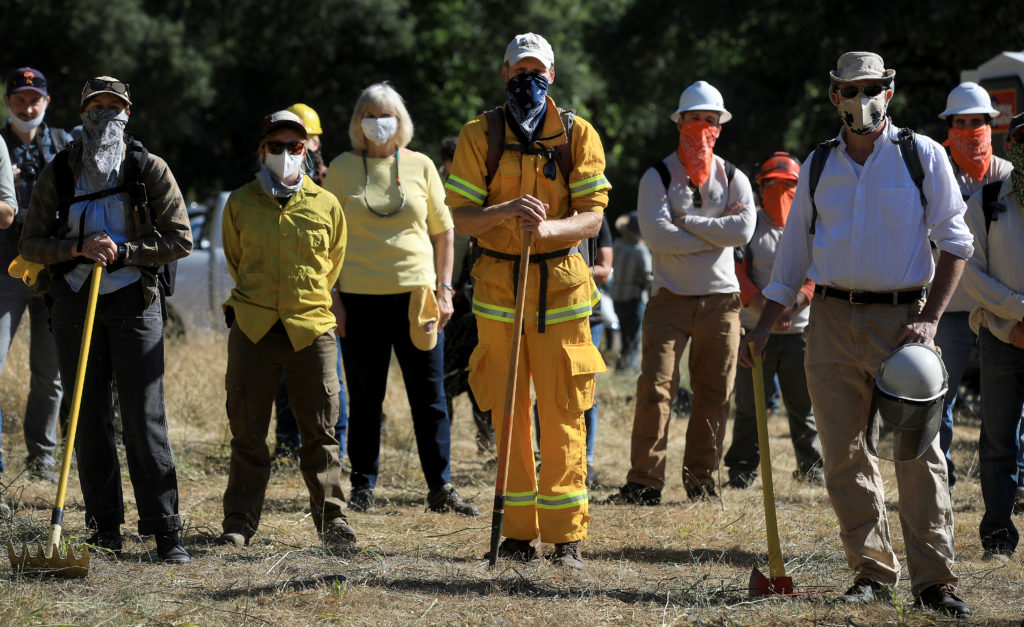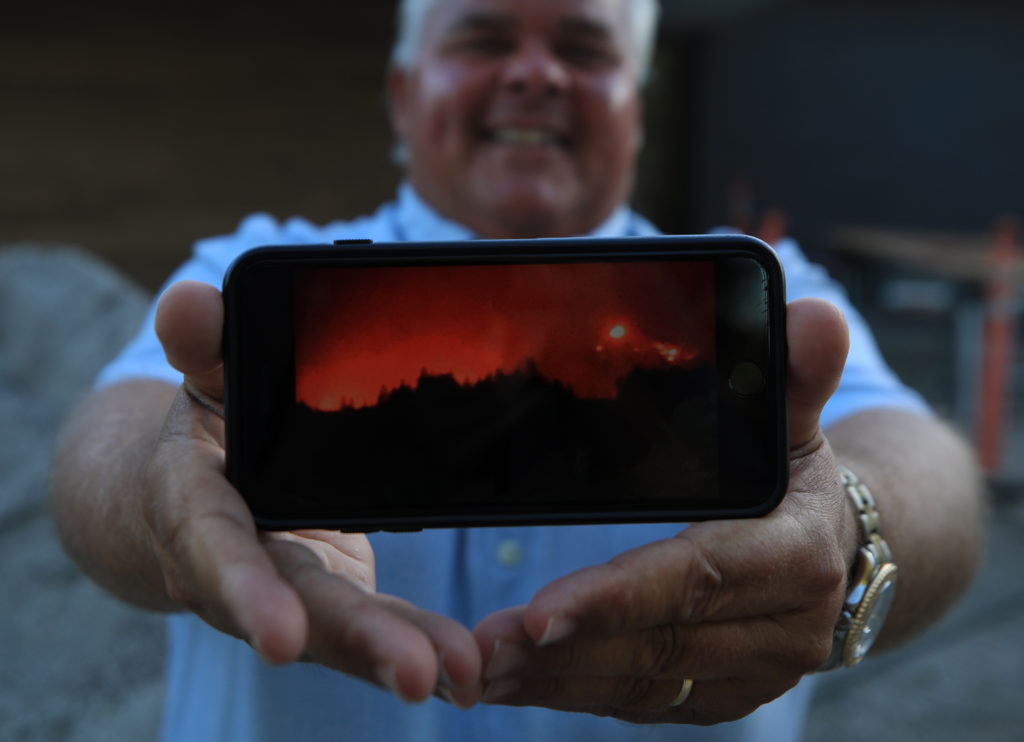The man called 911 from a cabin deep in the Mayacamas Mountains near Geyserville. Speaking in Spanish, he tried to tell the 911 dispatcher the mountain was on fire. It was Oct. 8, 2017, and the flames that so terrified him had begun when winds gusting up to 68 mph battered the region, knocking parts of a rotten oak tree into power lines off Pocket Ranch Road, setting fire to grasses and brush indelibly parched by years of drought.
Wind, tree, power lines, fire. Late summer and fall have become a season of dread in Sonoma County. But now a fatigued community must also prepare for the chance a wildfire might force them to leave their homes while the Covid-19 pandemic makes it dangerous to congregate.
That night in October 2017, the first dispatcher who took the call from the man near Geyserville didn’t speak Spanish. He had to wait until dispatcher Alma Bowen, Mexican-born and Sonoma County-raised, could pick up the line. Flames were all around, and the caller didn’t know where he was. He was an immigrant agricultural worker staying on the remote property where he worked, Bowen recalled.
“I was able to talk him through finding a piece of mail,” said Bowen, 51, of Windsor. “He had to tell me, number by number, letter by letter the address. He couldn’t read, even in Spanish. But he knew the letters.” Bowen advised him on a possible exit route, telling him, “Do what you can to get out of there.”
Bowen doesn’t know what happened to the man. But she’ll never forget him. For her, he has come to represent what this autumn could bring if fire erupts during the pandemic. “We are all vulnerable,” Bowen said. “That position that gentleman was in… right now all of our compasses are spinning around without any direction.”
Surviving one disaster doesn’t necessarily buy time before the next one hits. The coronavirus has spread person to person like a wildfire burning thicket to thicket. By mid June, more than 155,000 California residents had tested positive for the disease, including more than 750 people in Sonoma County. This spring, the virus brought local hospitality businesses to a halt as health officials took unprecedented steps in ordering people to stay at home. One in five workers living in the county lost their jobs in April. And cases here continue to slowly tick upward; we have not yet reached a plateau.
With many minds trained on the virus threatening lives and livelihoods, Sonoma County Fire District Chief Mark Heine has been watching the hills turn brown. Late rains have done little to help the landscape recover from a dry winter.
“We’re used to battling the enemy we can see. We can see the fire coming over the hill. We can see the smoke. We can see the traffic of people fleeing flames,” Heine said. “We can’t see Covid-19.”
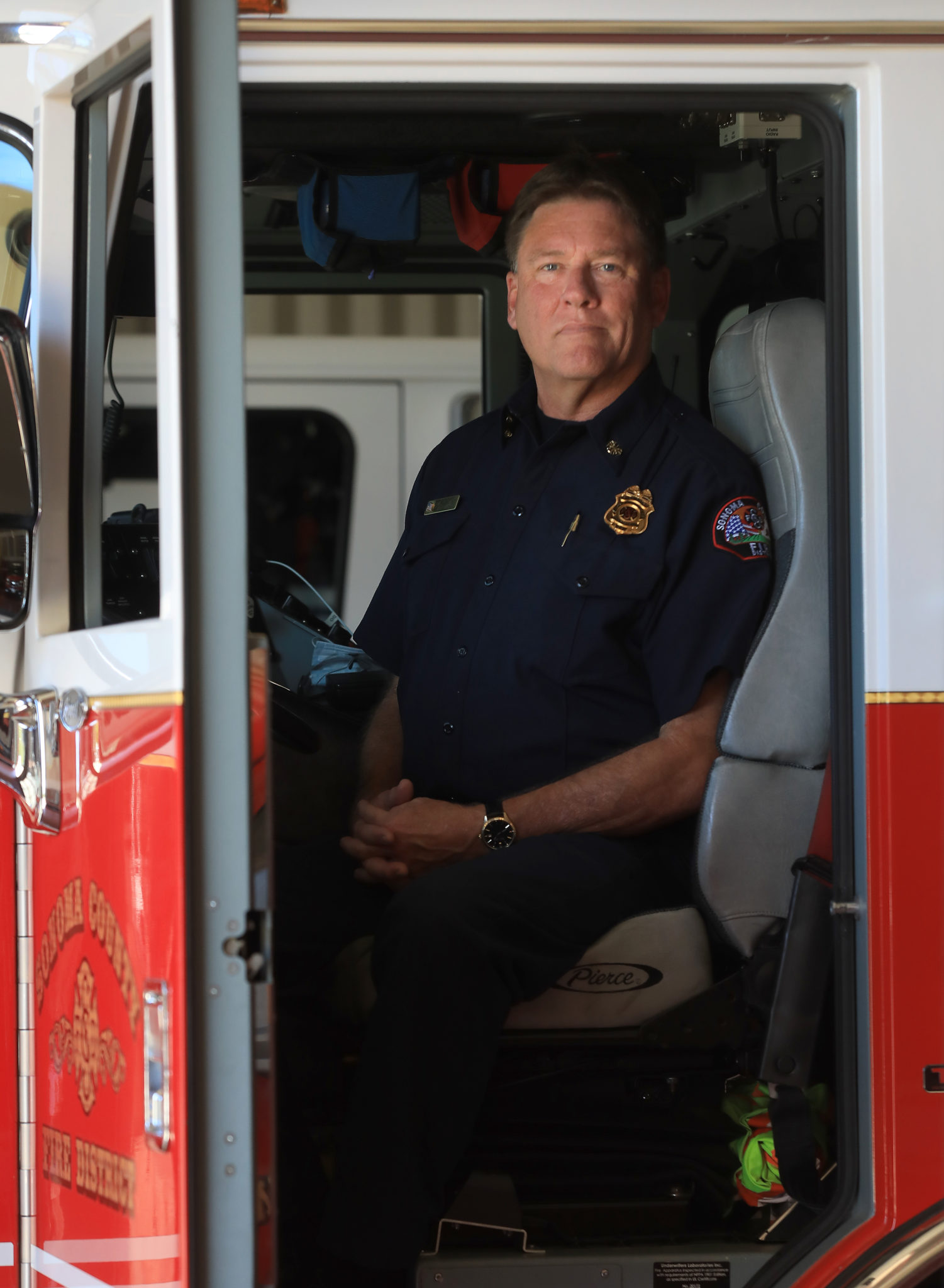
If evacuations are necessary this fall, people who would normally seek refuge with family or friends must rethink whether doing so will put themselves or others at risk of getting sick. And fire companies from across the state, the country, even the world could camp by the thousands at makeshift cities erected on the footprint of a parking lot. It’s the kind of mass gathering currently barred by public health officials because of the virus — yet it’s an unavoidable sacrifice officials will still make if there is a major fire.
Supervisor Susan Gorin, who lost her own home to fire in 2017, said the focus so far has been on preventing a surge of sick people from overwhelming hospitals and mitigating the financial fallout caused by stay-at-home orders. But she has begun hearing anxiety among her constituents about the looming threat of fire and power shut-offs, even as the virus remains its own concern.
“This is not a fantasy scenario; this could happen,” Gorin said. “In fact, we could still be experiencing some outbreaks in the community or perhaps a resurgence of the virus in the fall.”
“My heart is broken. I feel like my life ended and this is a different life.”
Two days before Health Officer Dr. Sundari Mase issued her March 18 order requiring most businesses to close and all but essential workers to stay home, Santa Rosa resident Kathryn Kubota called a moving company and arranged a hasty move home. The 2017 Tubbs fire destroyed the Wikiup home where Kubota and her husband raised three children and kept family heirlooms dating back to 1503.
Kubota’s husband is a physician and had anticipated the isolation orders. Kubota said she couldn’t imagine the family sheltering in place in the home they rented in east Santa Rosa. Even though their rebuild was not quite finished, they moved in anyway, arriving the day of the shutdown order. They were relieved, despite missing cabinet doors and light fixtures and nothing but dirt in the yard.
Kubota said she has found comfort in reconnecting with her neighbors, albeit at a distance. But she has yet to hold a grandchild born in March, who lives with their son and his wife in neighboring Windsor.
“My heart is broken. I feel like my life ended and this is a different life,” Kubota said. “Every time I start thinking about my other life, I get sad. And you can’t say it’s just me, it’s not. It’s so many other people.”
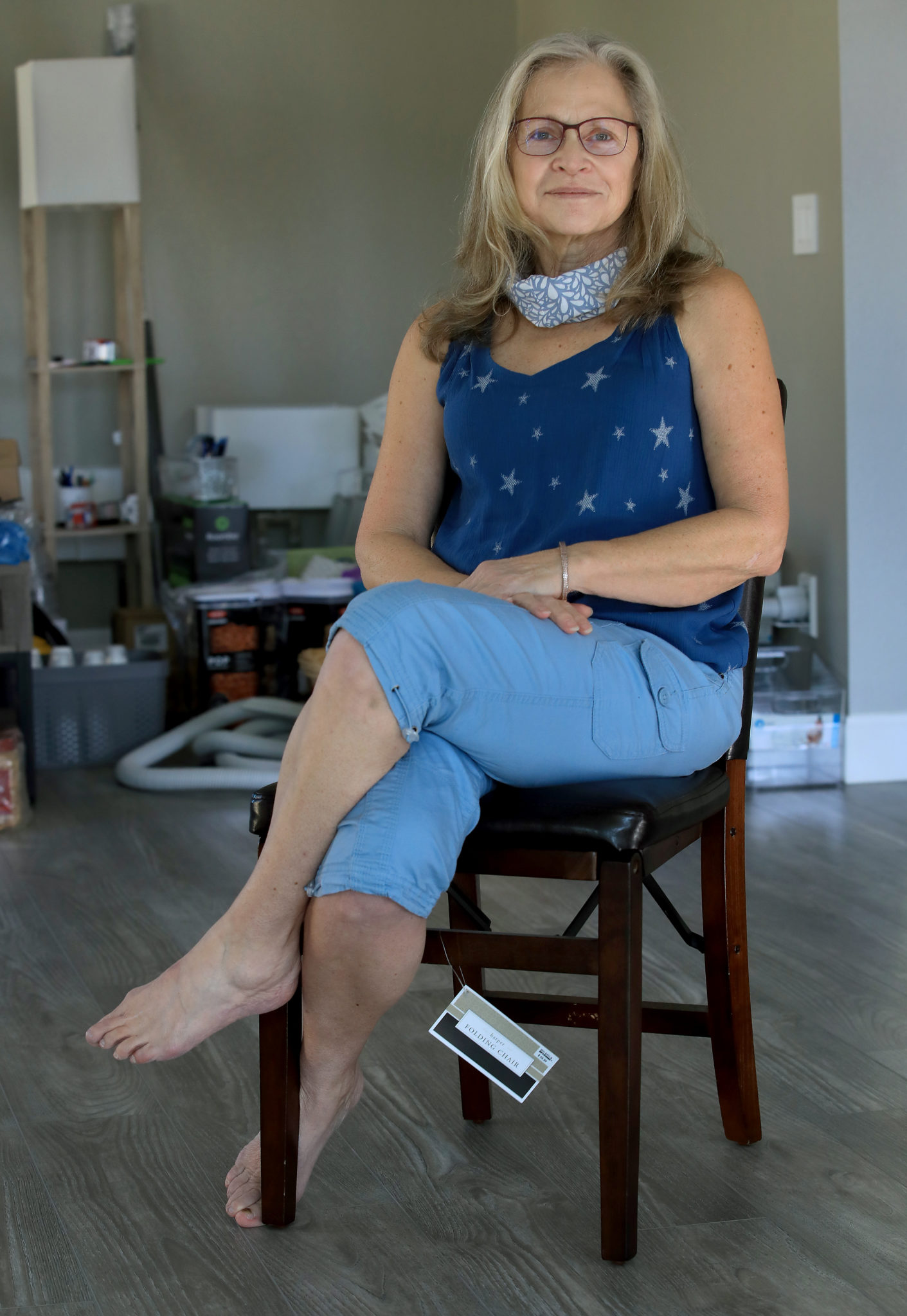
There are two main scenarios giving local emergency managers and fire chiefs nightmares as they consider the possibility fires could come again this fall during the pandemic. One is an outbreak of disease in an evacuation center. The other is an outbreak of illness among firefighters.
The Sonoma County Fairgrounds becomes a small city during a major fire response, reverberating with the constant thrum of engines and generators. During morning shift change, incident commanders stand shoulder to shoulder, poring over maps to strategize for the day’s firefight. Crews return from the fire line and congregate for meals. They meet fire service peers from across the state and country while restocking engines and crew buggies and reassembling gear. They’re lucky to get six hours of rest, Heine said.
“The last thing we want during this pandemic is to have the virus get established in a fire camp,” Heine said. California’s top fire and emergency officials have begun reimagining how to assemble hundreds or thousands of firefighters together in the event of a major fire. Mark Ghilarducci, director of the California Governor’s Office of Emergency Services, said the office is drawing up plans to isolate fire crews into smaller groups and transform those critical morning briefings into virtual meetings.
“Our fire camps will look different,” Ghilarducci said.
Local budgets will look different as well, hit hard by plummeting sales taxes. That may force the state’s renowned mutual aid firefighting system — credited with saving Sonoma County from the most dire scenarios of the Kincade fire — to look farther for reinforcements.
“The truth of the matter is, if these fires get big fast during the Covid response, many of these jurisdictions will have to keep more resources local for other kinds of responses, medical responses,” Ghilarducci said. “That will require us to have to go outside the region faster than we normally would.”
“The last thing we want during this pandemic is to have the virus get established in a fire camp.”
Ben Nicholls, Cal Fire Division Chief for Sonoma, Napa, and Lake counties, said it will be a huge challenge to ensure crews from Oregon, Montana, or even Southern California get properly briefed on the local terrain and strategies.
Cal Fire is already issuing changes to its firefighting playbook, such as a prohibition on transporting crews to the fire line by helicopter, in order to prevent people from being in close quarters, Nicholls said.
“Maybe we don’t pick a location for the crews as close to the fire as we could,” Nicholls said. “Everybody is trying to think outside of the box.”
Evacuees, may be sent to hotel rooms instead of evacuation shelters, especially if they are elderly or have health issues that make them vulnerable to Covid-19. The state has already secured 15,000 rooms to be used for health care workers and others needing to isolate, and they may add more before peak fire season hits in the fall, Ghilarducci said.
Sheriff Mark Essick said a major wildfire threatening neighborhoods would initially trump concerns about the virus. Since the Kincade fire, his office has created a system of evacuation zones so they can swiftly identify areas at risk and alert residents. The pandemic doesn’t change the way the Sheriff’s Office would run that type of operation, when lives are in immediate danger.
“Think about it like going to the emergency room. You walk in and you have a bullet wound to your gut and you also have the flu,” Essick said. “They’re going to treat the wound. You save lives first, you stabilize, and then you treat secondary issues.”
Emergency Services Director Chris Godley said the county is planning for earlier, larger, and potentially more frequent evacuations in the event of a big fire.
He envisions dozens of small evacuation sites instead of central centers for fire refugees, with temperature checks and hand-washing stations.
The vast majority of people fleeing fire do not head to evacuation centers, but the 2% to 5% who do tend to be thosenwith the fewest resources and greatest needs, Godley said. One possibility is using alternate care sites created for a surge of coronavirus patients, such as the one at Sonoma State University, to help house people fleeing fire.
But the county can’t and won’t house everyone. Just as important as the government’s emergency response are the ties neighbors and community organizations keep with one another.
“I know we talk about ’Sonoma Strong,’ but ultimately that’s what carries the day,” Godley said. “People are tired. People aren’t in their normal social networks. They don’t see
each other at work, they don’t talk to each other. Now we’re in a crisis. Are we going to be able to support people as we have in the past?”
California’s fire service has fewer firefighters than it did in 1975, despite living in “an era of megafires,” said State Sen. Mike McGuire, whose Fitch Mountain community in Healdsburg was threatened by the Kincade fire. Over the decades, Cal Fire shifted toward a seasonal approach to hiring, which has left fewer on the job during winter when fire prevention projects get done.
McGuire can recite the numbers marking California’s defense against wildfire: the $85.5 million the state is spending this year to add 172 permanent and 350 seasonal personnel to Cal Fire’s ranks. He can boast about the Vietnam-era helicopters the state is replacing with Black Hawks capable of flying at night and the C-130 cargo planes that are being purchased to build what McGuire said will become the largest all-year firefighting fleet in the nation.
“Unfortunately, we’ve become good at responding to emergencies,” he said. “Many of the fires that we’ve seen would bring other regions to their knees. Our communities have gone through hell and back.” ‘
During the Kincade evacuations, McGuire went to work in Sacramento while his wife, Erika McGuire, and both of their mothers fled their homes and stuck together. Now they are forced to rethink their evacuation plans given the particular risk of the virus for older residents. Depending on the status of the virus in California this fall, an evacuation may mean his family, and others like his, must split up.
“It all worked last year, they were all together,” McGuire said. When the Kincade fire made its run from the Alexander Valley to Windsor, general contractor Ed Nessinger saw the flames crowning hills from his ridgetop home in Shiloh Estates. Nessinger spent that night cutting firebreaks with a bulldozer.
“When do the locusts show up and when does the river turn red?”
His property was one of just a handful in his 60-home community to lose structures to fire that night. The in-law unit where his daughter and her husband had been living since losing their Fountaingrove home in the 2017 Tubbs fire burned to the ground, adding grief onto grief. And the nearby smoke and heat caused so much damage to Nessinger’s own home that it was left uninhabitable.
Undeterred, Nessinger has led a group of neighbors in fortifying their community against the next fire. Today, his neighborhood has been transformed from dense brush to a sweeping oak-studded landscape. Whole hillsides have been mowed, and low-lying tree limbs that act as a ladder for flames into the canopy are gone.
He is proud of that work, which has come at significant time and expense. Yet he too worries about exhaustion in a county already tested by fire is now overwhelmed with the impacts of the pandemic: homeschooling, working from home, and avoiding contact with others.
“The general comment is: When do the locusts show up and when does the river turn red?” Nessinger said.
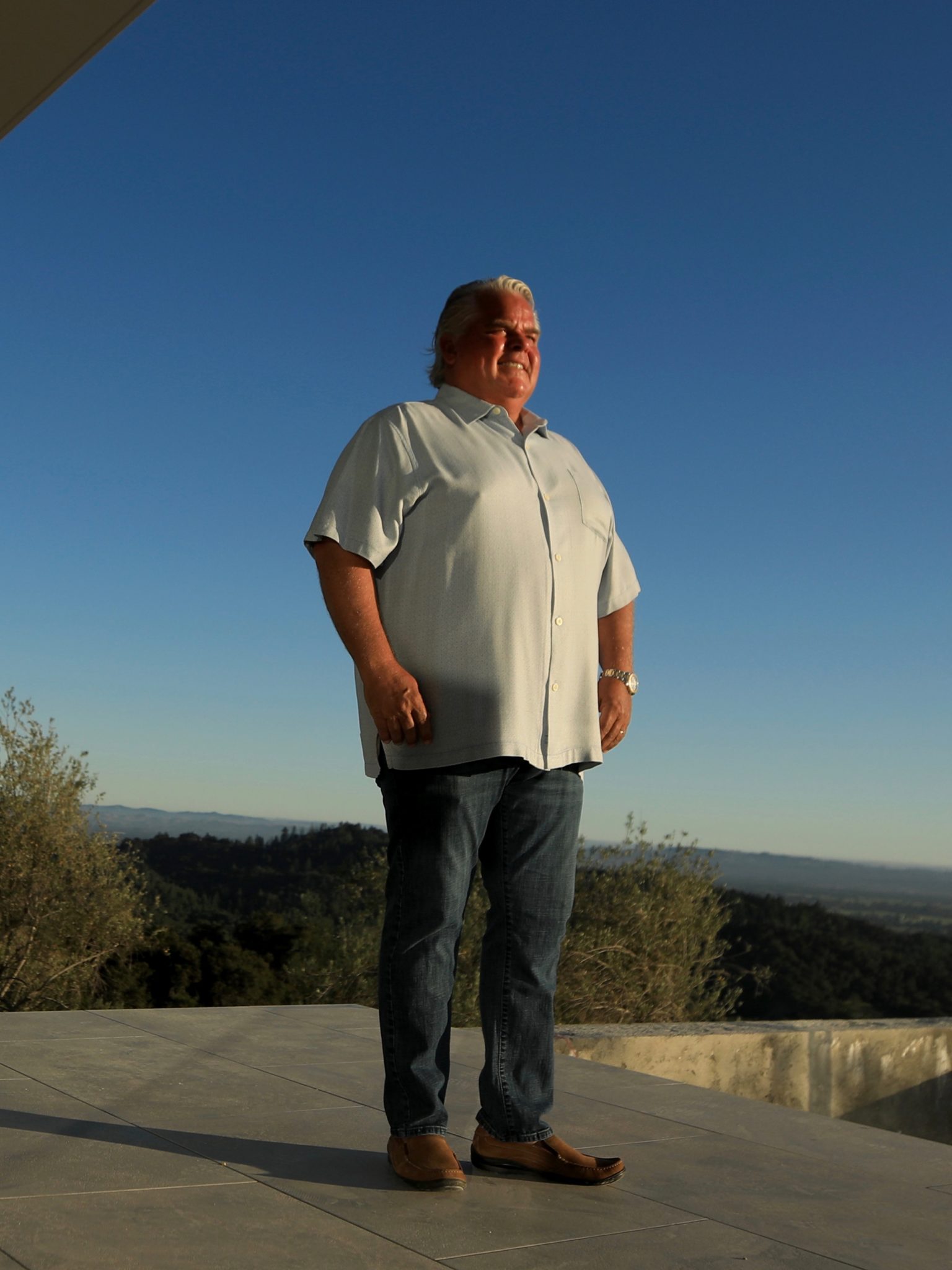
Santa Rosa physician Gary Green’s specialty is infectious disease, but living through years of major fires feels to him like evidence that the county can handle whatever horror the universe throws at it. He sees proof of this everywhere he goes: the gas station, Costco, or Sutter Santa Rosa Regional Hospital. People are polite and wear masks, and medical staff who twice evacuated an entire hospital during the fires now treat coronavirus patients.
Roughly 100 Sonoma County residents returned from voyages on the Grand Princess cruise ship, where the virus took hold. Two of them died while under care at Sutter hospital. “I think Sonoma County has done a good job, and remember, we had the virus really early,” Green said. “There were 100 people who came off that cruise ship. We didn’t see pockets of transmission then. This county has been through fires; we’ve been through disasters.”
But the community must remain vigilant, Green said, drawing comparisons between a wildfire and what could happen if people stop wearing masks, washing hands, and generally limiting contact with others.
“You just don’t want an ember to start a fire again until we develop herd immunity or develop a vaccine — we have to stay safe,” Green said.
Nearly three years later, Alma Bowen remembers her former life as a dispatcher and the desperate man’s voice that stood out amid a blur of frantic 911 calls coming into her dispatch center at a rate of about 300 calls per hour.
Even though she doesn’t know what became of him, she knows how his call shaped her life. One month after the fire, she left her 20-year career as an emergency dispatcher. His call clarified the need she saw in the community for people to help Spanish-speaking immigrants prepare themselves to live with the threat of wildfires and earthquakes.
Bowen started an organization, Nuestra Comunidad, or “our community,” to help prepare local Latino and immigrant communities for emergencies.
Even with her ambition and vision, Bowen underestimated how crucial her work would become. Once Sonoma County public health officials began crunching demographic data of those who had been diagnosed with Covid-19, they learned the virus was affecting the Latino population at shockingly high rates. By mid June, Latino residents of Sonoma County represented 72% of all Covid-19 diagnoses, but only 27% of the population.
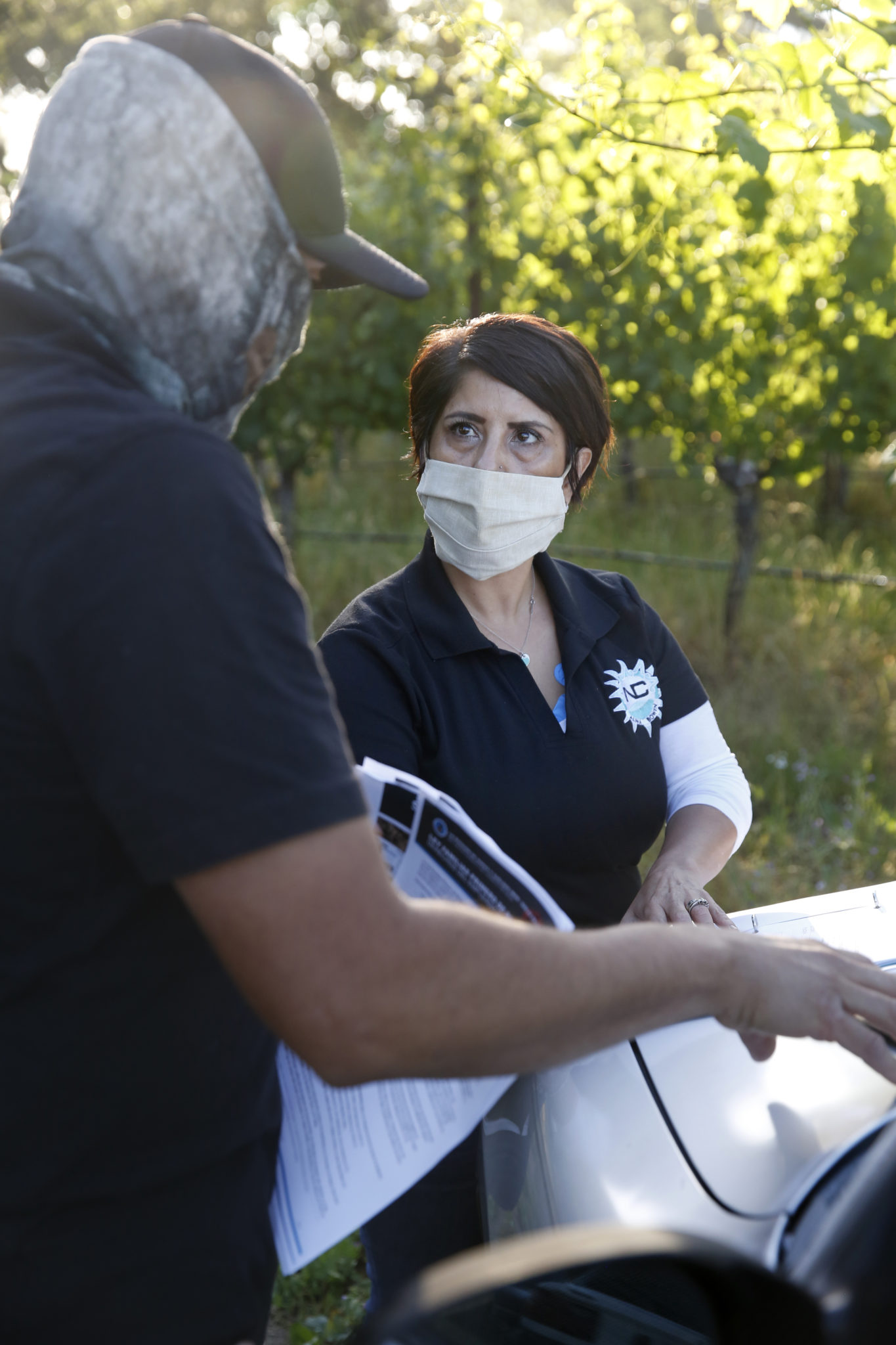
Bowen had been preparing to increase her outreach about wildfire preparedness to the Latino community, but she quickly pivoted. Now she spends several days each week visiting farm labor job sites to educate workers about the risks of the disease. And she still brings stacks of Spanish-language flyers about emergency go-bags and includes advice about wildfire in her speeches.
As another October approaches and the terrifying memories resurface, Bowen says she visualizes a light switch — one that constantly needs to be switched on and off in people’s minds in this fire-prone county. One direction fire. The other, Covid-19.
“We’re having all these things at once.”








